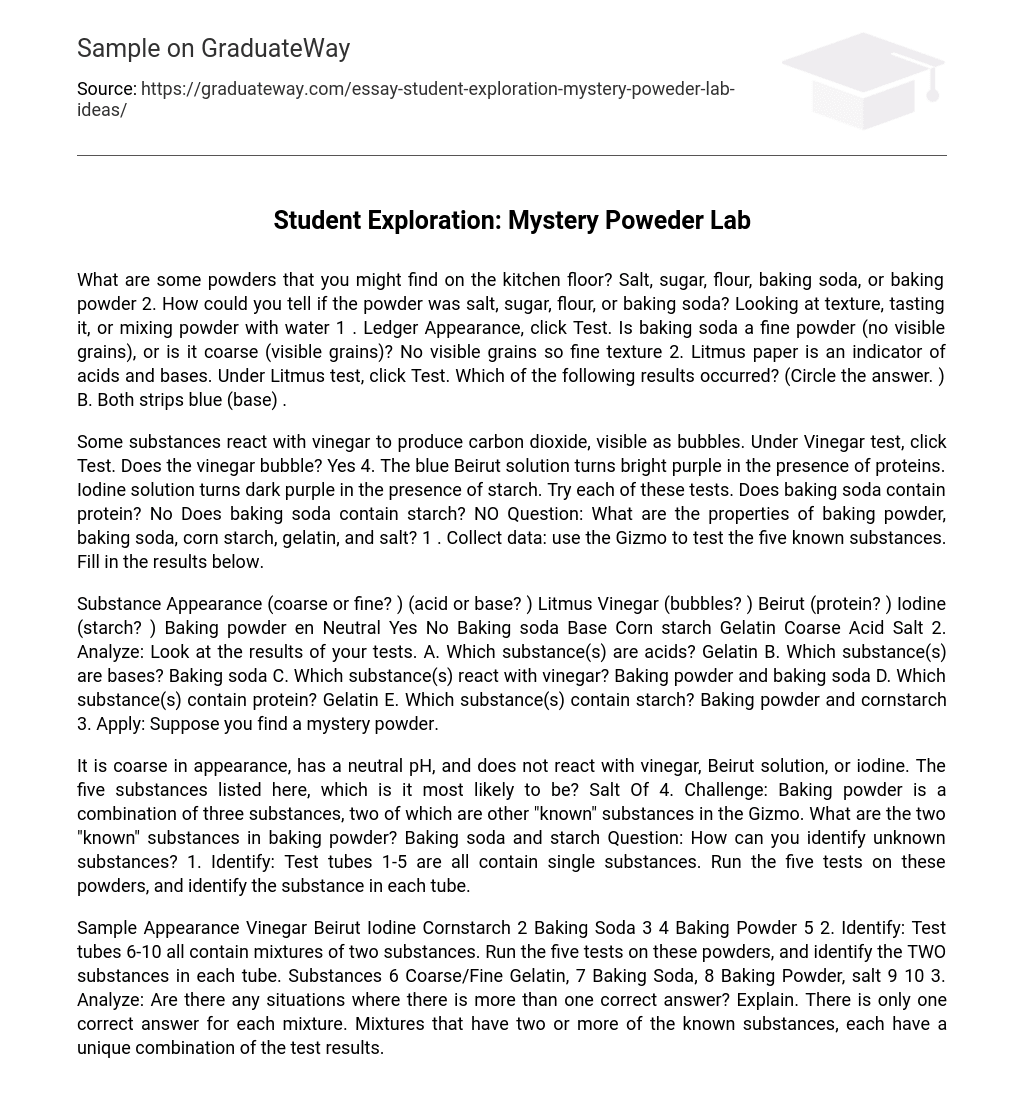What are some powders that you might find on the kitchen floor? Salt, sugar, flour, baking soda, or baking powder 2. How could you tell if the powder was salt, sugar, flour, or baking soda?
Looking at texture, tasting it, or mixing powder with water
1 . Ledger Appearance, click Test. Is baking soda a fine powder (no visible grains), or is it coarse (visible grains)? No visible grains so fine texture
2. Litmus paper is an indicator of acids and bases. Under Litmus test, click Test. Which of the following results occurred? (Circle the answer. ) B. Both strips blue (base) .
3. Some substances react with vinegar to produce carbon dioxide, visible as bubbles. Under Vinegar test, click Test. Does the vinegar bubble? Yes
4. The blue Beirut solution turns bright purple in the presence of proteins. Iodine solution turns dark purple in the presence of starch. Try each of these tests. Does baking soda contain protein? No Does baking soda contain starch? NO Question: What are the properties of baking powder, baking soda, corn starch, gelatin, and salt?
1 . Collect data: use the Gizmo to test the five known substances. Fill in the results below.
Substance Appearance (coarse or fine? ) (acid or base? ) Litmus Vinegar (bubbles? ) Beirut (protein? ) Iodine (starch? ) Baking powder en Neutral Yes No Baking soda Base Corn starch Gelatin Coarse Acid Salt 2. Analyze: Look at the results of your tests.
A. Which substance(s) are acids? Gelatin
B. Which substance(s) are bases? Baking soda
C. Which substance(s) react with vinegar? Baking powder and baking soda
D. Which substance(s) contain protein? Gelatin
E. Which substance(s) contain starch? Baking powder and cornstarch
3. Apply: Suppose you find a mystery powder.
It is coarse in appearance, has a neutral pH, and does not react with vinegar, Beirut solution, or iodine. The five substances listed here, which is it most likely to be? Salt Of
4. Challenge: Baking powder is a combination of three substances, two of which are other “known” substances in the Gizmo. What are the two “known” substances in baking powder? Baking soda and starch Question: How can you identify unknown substances?
1. Identify: Test tubes 1-5 are all contain single substances. Run the five tests on these powders, and identify the substance in each tube.
Sample Appearance Vinegar Beirut Iodine Cornstarch 2 Baking Soda 3 4 Baking Powder 5 2. Identify: Test tubes 6-10 all contain mixtures of two substances. Run the five tests on these powders, and identify the TWO substances in each tube. Substances 6 Coarse/Fine Gelatin, 7 Baking Soda, 8 Baking Powder, salt 9 10 3. Analyze: Are there any situations where there is more than one correct answer? Explain. There is only one correct answer for each mixture. Mixtures that have two or more of the known substances, each have a unique combination of the test results.





